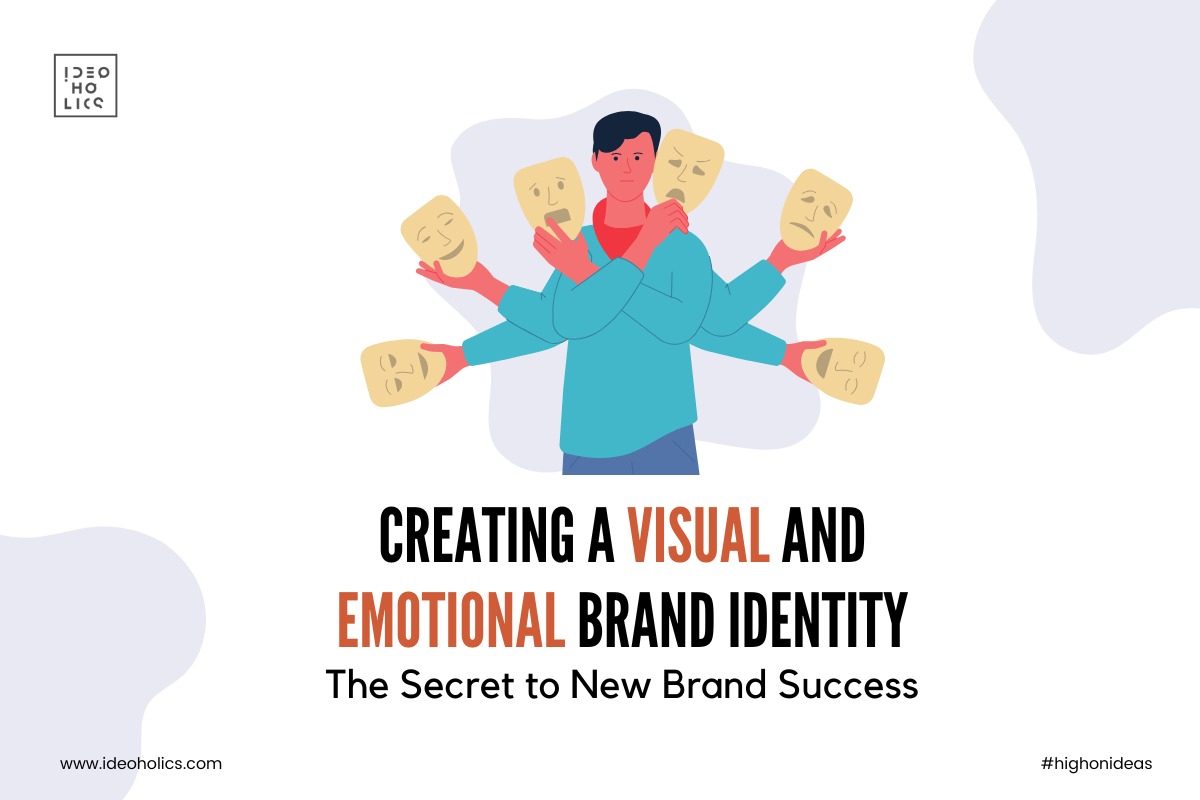
Creating a Visual and Emotional Brand Identity – The Secret to New Brand Success
In today’s competitive market, a brand is more than just a logo or a catchy slogan. It’s the personality and story behind your business that connects emotionally with your audience. A well-crafted visual and emotional brand identity can transform a new business from a mere idea into a memorable and trusted brand. In this blog, we’ll explore how to create a strong visual and emotional identity that resonates with your target audience and helps your brand stand out.
What is Brand Identity?
Brand identity is the collection of visual elements, messaging, and experiences that make up the perception of your brand. It includes everything from your logo, color scheme, and typography, to the tone of voice in your marketing materials and the emotions your brand evokes.
A visual brand identity is the graphic representation of your brand—what people see when they think about your company. This encompasses elements like your logo, colors, fonts, and imagery.
An emotional brand identity focuses on how your brand makes people feel. It’s about the connections you build with your audience and how they relate to your brand on a personal level. Emotionally-driven brands create loyalty because they resonate with customers beyond just the product or service they offer.
Why Visual and Emotional Identity Matter for New Brands
For new brands, it’s essential to establish a cohesive visual and emotional identity from the outset. A strong identity helps you:
1. Create Recognition and Trust
A consistent and distinctive visual identity, like a memorable logo or a unique color palette, helps customers recognize and recall your brand. This visual consistency builds trust and familiarity, which are critical for new brands trying to make an impression.
2. Stand Out from the Competition
In a crowded marketplace, your brand’s identity helps differentiate you from competitors. A unique visual style and emotional connection can set your brand apart, making it easier for consumers to choose you over others.
3. Build Emotional Connections
Emotional identity makes your brand relatable and human. It’s about conveying your brand’s values, mission, and personality, allowing your audience to connect on a deeper level. This connection fosters loyalty and long-term relationships.
4. Enhance Customer Experience
A cohesive visual and emotional identity improves the overall customer experience. From browsing your website to interacting with your products or services, every touchpoint should reinforce the identity you’ve created, making customers feel comfortable and confident in their choice to engage with your brand.
Creating a Visual Brand Identity
The visual components of your brand identity communicate your brand’s personality at a glance. Here are the key steps to creating a compelling visual identity for your new brand:
1. Design a Memorable Logo
Your logo is the cornerstone of your visual identity. It should be simple, unique, and instantly recognizable. A good logo encapsulates your brand’s values and mission while remaining versatile across various mediums. Whether it’s a minimalist icon or a more intricate design, make sure it resonates with your target audience and aligns with your brand’s overall tone.
2. Choose a Distinct Color Palette
Colors evoke emotions and can significantly impact how people perceive your brand. For example, blue often represents trust and professionalism, while green is associated with sustainability and health. Choose colors that reflect your brand’s personality and values, and use them consistently across all your marketing materials and platforms.
3. Select Complementary Typography
Typography is a crucial element in conveying your brand’s tone. Whether you go for serif or sans-serif fonts, ensure they match your brand’s voice. Consistency in typography across your website, business cards, social media, and other marketing assets helps create a cohesive and polished look.
4. Develop a Visual Style and Imagery
Visual style refers to the overall aesthetic of your brand, including photography, illustrations, and iconography. Whether you opt for clean, modern images or more nostalgic, retro visuals, ensure that your imagery consistently reflects your brand’s identity and communicates the right message.
Creating an Emotional Brand Identity
While visuals are vital, the emotional connection you create with your audience is what makes them stick around. Here’s how to create an emotional brand identity that resonates:
1. Define Your Brand’s Values
Your brand’s values should be at the core of everything you do. What do you stand for? Are you committed to sustainability, innovation, customer service, or social change? Clearly define your brand’s mission and values, and make sure they are reflected in both your messaging and actions.
2. Craft a Relatable Brand Voice
Your brand’s voice plays a significant role in forming an emotional connection with your audience. The tone of your content should match the emotions you want to evoke. A playful, witty voice might suit a youthful brand, while a compassionate, reassuring tone might be better for a healthcare or wellness brand. The goal is to communicate in a way that feels authentic and relatable to your audience.
3. Tell Your Brand Story
People connect with stories, not just products or services. Share the story behind your brand—why it was founded, what challenges it has overcome, and what drives its mission. A compelling brand story helps humanize your business and invites customers to become part of that story.
4. Engage with Your Audience Emotionally
Engage your audience by tapping into their emotions. Whether through social media, email marketing, or customer service, make every interaction count. Show empathy, respond to feedback, and offer experiences that go beyond transactions. Brands that engage with their audience on a personal level are more likely to build lasting relationships.
5. Create Positive Associations
Consistently deliver on your promises, whether it’s through great customer service, quality products, or a strong social impact. When customers experience positive emotions in their interactions with your brand, those feelings become associated with your business, increasing loyalty and advocacy.
Conclusion: The Power of Visual and Emotional Identity
Creating a powerful visual and emotional brand identity is the secret to long-term success for any new brand. By carefully crafting both the aesthetic and emotional elements of your identity, you can build a memorable brand that resonates deeply with your target audience. Remember, a brand is more than just a logo—it’s a connection, a story, and a relationship that grows over time.
By aligning your visuals with your brand’s emotions and values, you set the stage for a brand that doesn’t just survive but thrives. Whether it’s through eye-catching design or heartfelt messaging, a strong brand identity will make your new business unforgettable in the eyes of your audience.




